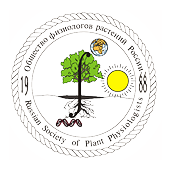Новости науки и практики // Ноябрь 2023

Plasmodesmal connectivity in C4 Gynandropsis gynandra is induced by light and dependent on photosynthesis (OA)
In leaves of C4 plants, the reactions of photosynthesis become restricted between two compartments. Typically, this allows accumulation of C4 acids in mesophyll (M) cells and subsequent decarboxylation in the bundle sheath (BS). In C4 grasses, proliferation of plasmodesmata between these cell types is thought to increase cell-to-cell connectivity to allow efficient metabolite movement. However, it is not known whether C4 dicotyledons also show this enhanced plasmodesmal connectivity and so whether this is a general requirement for C4 photosynthesis is not clear. How M and BS cells in C4 leaves become highly connected is also not known.
https://nph.onlinelibrary.wiley.com/doi/10.1111/nph.19343?utm_source=substack&utm_medium=email
Estimating leaf day respiration from conventional gas exchange measurements (OA)
Leaf day respiration (Rd) strongly influences carbon-use efficiencies of whole plants and the global terrestrial biosphere. It has long been thought that Rd is slower than respiration in the dark at a given temperature, but measuring Rd by gas exchange remains a challenge because leaves in the light are also photosynthesizing.
https://nph.onlinelibrary.wiley.com/doi/10.1111/nph.19330?utm_source=substack&utm_medium=email
Tunable recurrent priming of lateral roots in Arabidopsis: More than just a clock?
Reyes-Hernández & Maizel review the recent experimental and modelling approaches to understand the molecular processes underlying the recurring lateral root formation. They argue that the intermittent priming of lateral roots results from interweaving the pattern of auxin flow and root growth together with an oscillatory auxin-modulated transcriptional mechanism and illustrate its long-range sugar-mediated tuning by light.
Jasmonates, gibberellins, and powdery mildew modify cell cycle progression and evoke differential spatiotemporal responses along the barley leaf (OA)
Barley (Hordeum vulgare) is an important cereal crop, and its development, defence, and stress responses are modulated by different hormones including jasmonates (JAs) and the antagonistic gibberellins (GAs). Barley productivity is severely affected by the foliar biotrophic fungal pathogen Blumeria hordei. In this study, primary leaves were used to examine the molecular processes regulating responses to methyl-jasmonate (MeJA) and GA to B. hordei infection along the leaf axis.
New molecular components that regulates the transcriptional hub in root hairs: coupling environmental signals to endogenous hormones to coordinate growth
discuss recent advances in our understanding of the molecular mechanisms underlying the growth of Arabidopsis thaliana root hairs in the interface between responses to environmental cues (e.g. nutrients such as nitrates, phosphate and microorganism) and hormonal stimuli (e.g. auxin).
Gibberellins promote polar auxin transport to regulate stem cell fate decisions in cambium
Mäkilä et al. show that the positioning of an auxin signalling maximum within the cambium determines the fate of stem cell daughters. The position is modulated by gibberellin-regulated, PIN1-dependent polar auxin transport. Gibberellin treatment broadens auxin maximum from the xylem side of the cambium towards the phloem.
https://www.nature.com/articles/s41477-023-01360-w?utm_source=substack&utm_medium=email
Generation and characterisation of an Arabidopsis thaliana f3h/fls1/ans triple mutant that accumulates eriodictyol derivatives
Schilbert et al. describe the in planta multifunctionality of the three central flavonoid 2-ODDs from A. thaliana and identify a bypass in the f3h/fls1/ans triple mutant that leads to the formation of eriodictyol derivatives. As (homo-)eriodictyol are known as bitter taste maskers, the annotated eriodictyol (derivatives) and in particular the knowledge gained about their in planta production, could be used to genetically engineer the flavonoid composition of crops to improve the palatability of food produced from them.
https://www.biorxiv.org/content/10.1101/2023.09.21.558826v1?utm_source=substack&utm_medium=email
Phytochrome B phosphorylation expanded: site-specific kinases are identified
This review summarizes our recent views about the roles of the identified phosphorylated phyB residues, what we know about the enzymes that modulate the phospho-state of phyB, and how these recent discoveries impact future investigations.
https://nph.onlinelibrary.wiley.com/doi/10.1111/nph.19314?utm_source=substack&utm_medium=email
From stress to responses: aluminium-induced signalling in the root apex
Wang et al. summarize the recent advances in the understanding of Al-induced signalling and regulatory networks in the root apex involved in the regulation of Al-induced inhibition of root growth and Al toxicity/resistance. This knowledge provides novel insights into how Al-induced signals are recognized by root apical cells, transmitted from the apoplast to symplast, and finally initiate the defence system against Al.
https://academic.oup.com/jxb/article-abstract/74/5/1358/6968450?utm_source=substack&utm_medium=email
Plants transformed into detectors of dangerous chemicals
What if your house plant could tell you your water isn't safe? Scientists are closer to realizing this vision, having successfully engineered a plant to turn beet red in the presence of a banned, toxic pesticide.
https://www.sciencedaily.com/releases/2023/10/231023124424.htm
How new plant cell walls change their mechanical properties after cell division
Biomechanics reveals cell wall age properties and how newly born cells can change their local shape and influence the growth of plant organs
Scientists reveal new plant cell walls can have significantly different mechanical properties compared to surrounding parental cell walls, enabling cells to change their local shape and influence the growth of plant organs.
https://www.sciencedaily.com/releases/2023/10/231002170828.htm
Plants could worsen air pollution on a warming planet
New research shows that plants such as oak and poplar trees will emit more of a compound called isoprene as global temperatures climb. Isoprene from plants represents the highest flux of hydrocarbons to the atmosphere after methane. Although isoprene isn’t inherently bad — it actually helps plants better tolerate insect pests and high temperatures — it can worsen air pollution by reacting with nitrogen oxides from automobiles and coal-fired power plants.
https://www.sciencedaily.com/releases/2023/10/231005161736.htm
Новости
Новости науки и практики // Апрель 2024
Обзор научных новостей, опубликованных во всемирной паутине за последний месяцФосфорилирование плазматической мембраны H+-АТФазы Thr881 (треонин) участвует в светоиндуцированном открывании устьиц
Ученые из Университета Нагои (Nagoya University) и Института трансформирующих биомолекул (WPI-ITbM) обнаружили новый ...Научная конференция «Photosynthesis and Hydrogen Energy Research for Sustainability – 2024»
Приглашаем Вас принять участие в XII международной научной конференции


Объявления
Записей не найдено.



